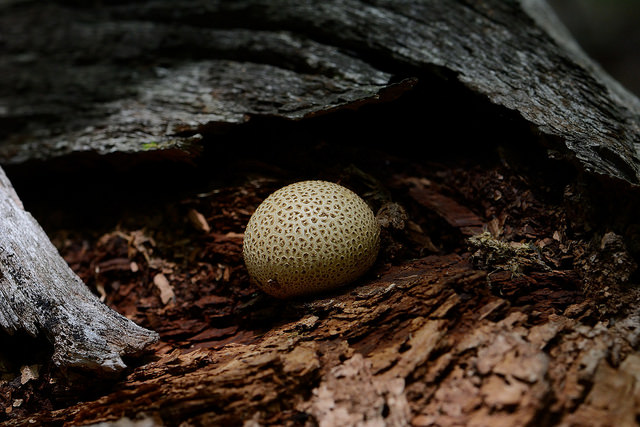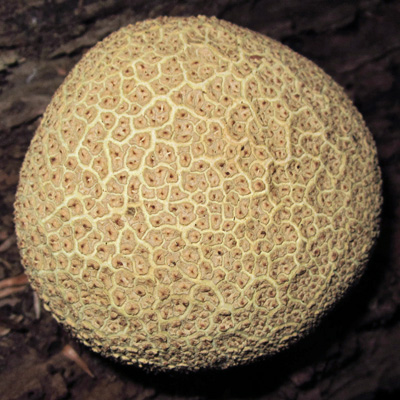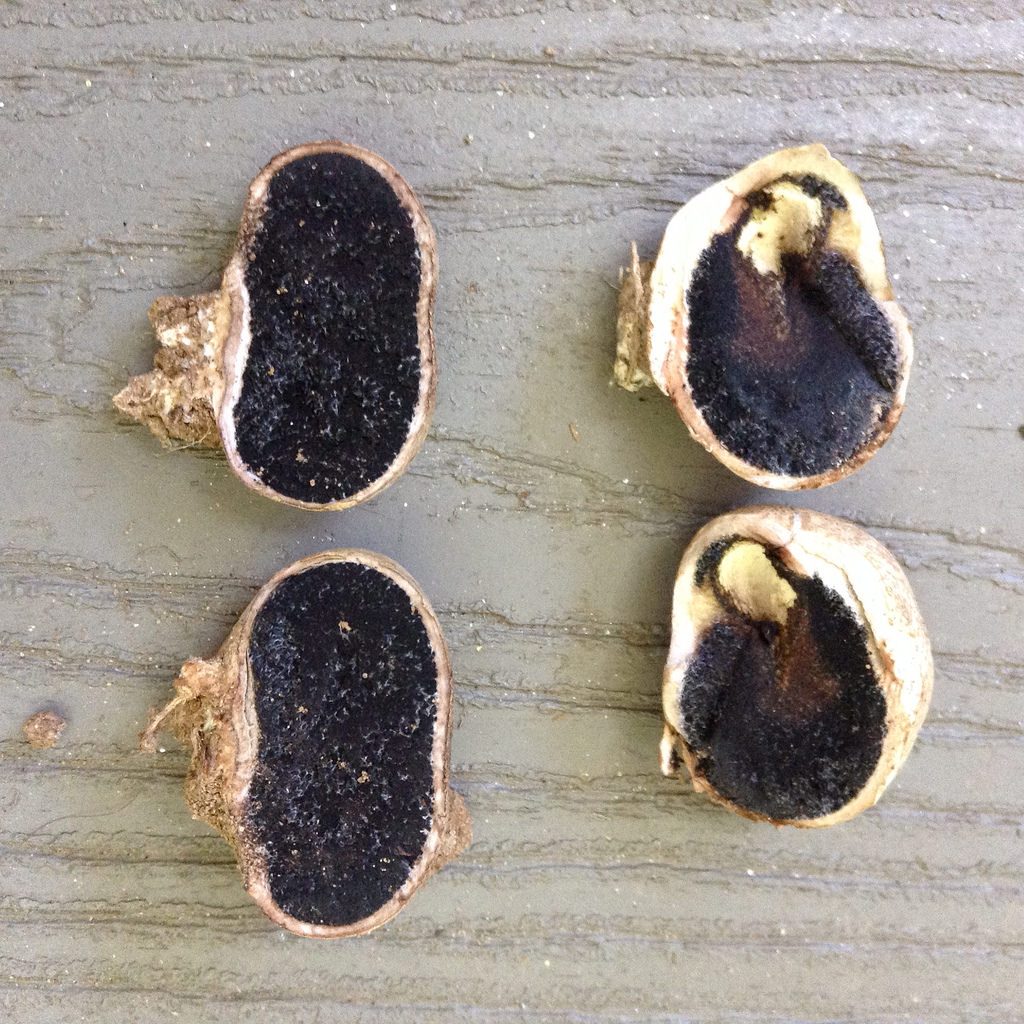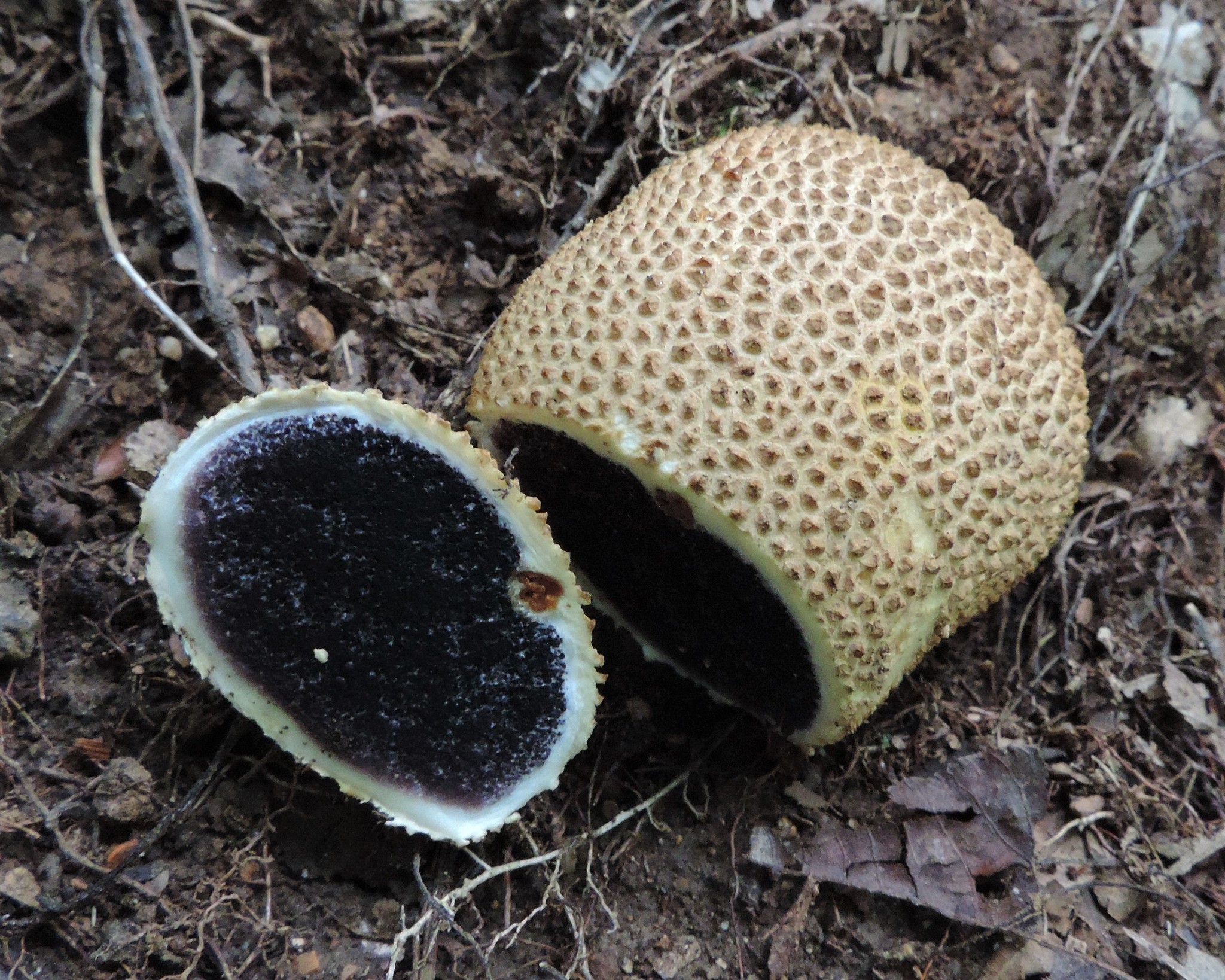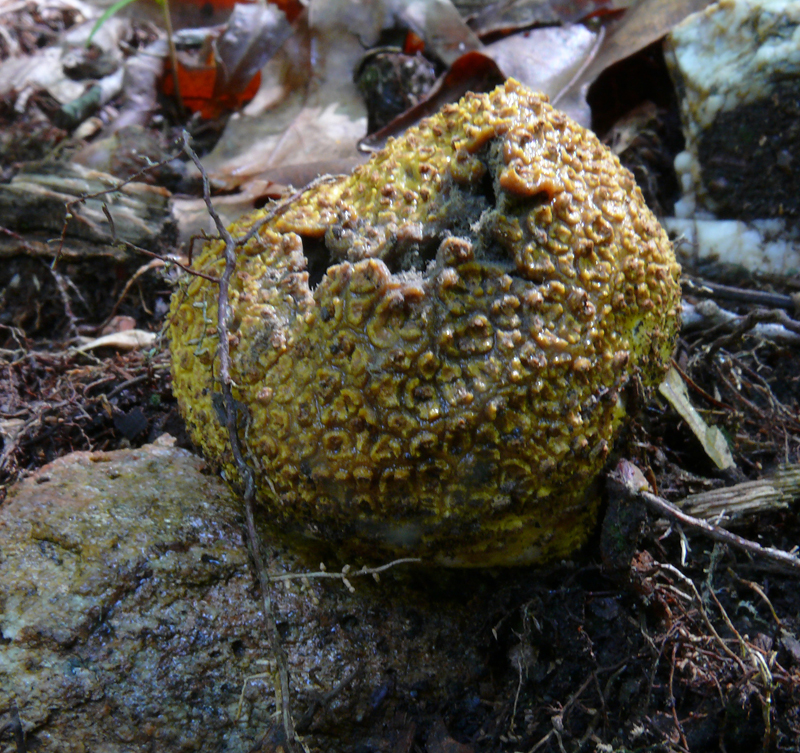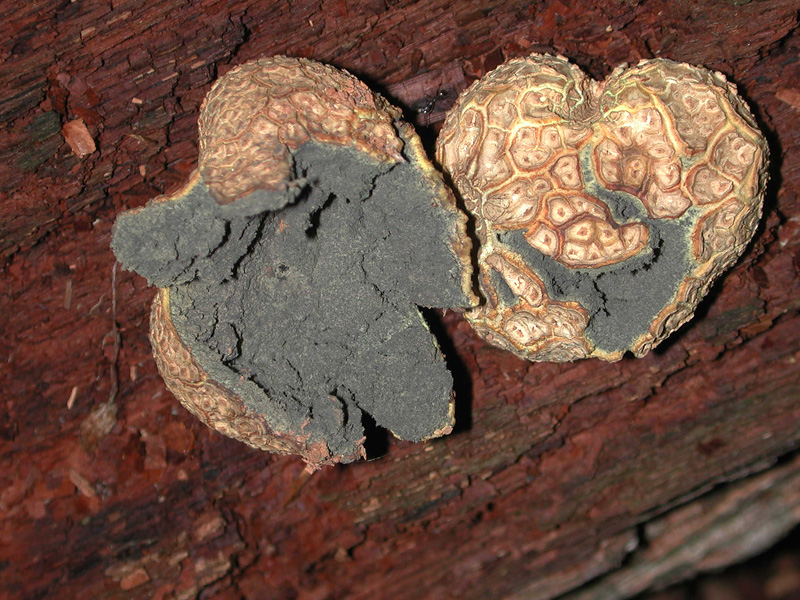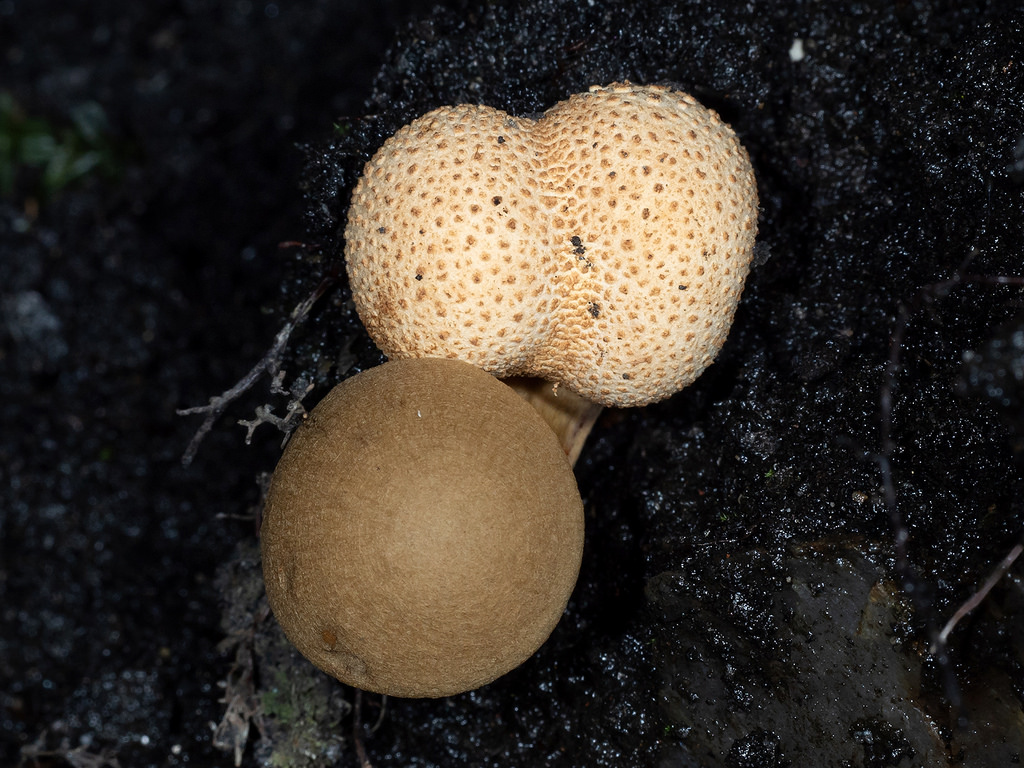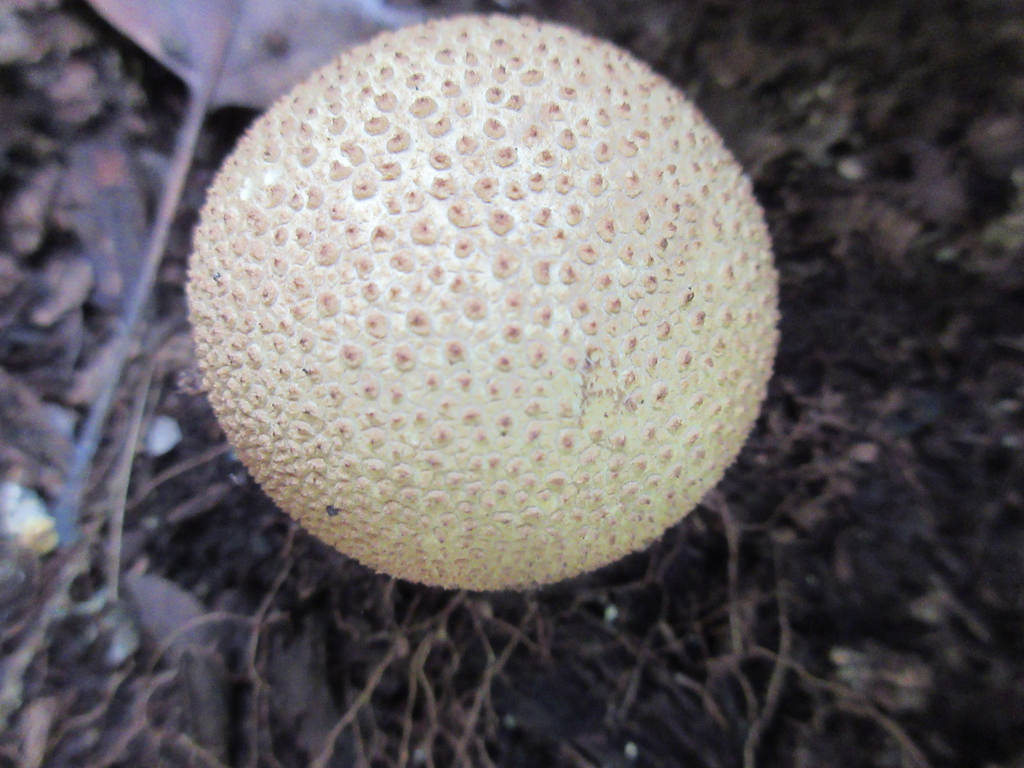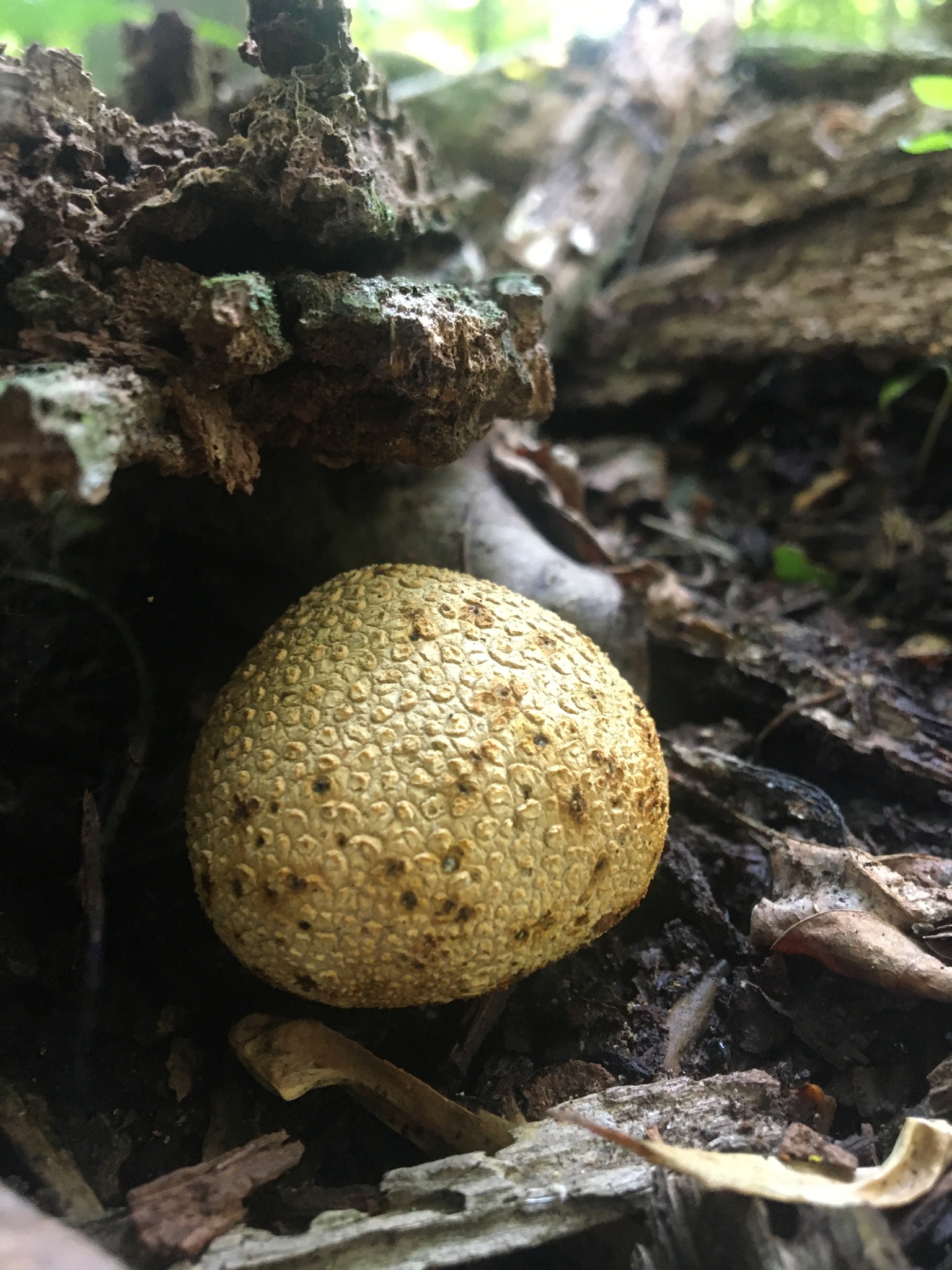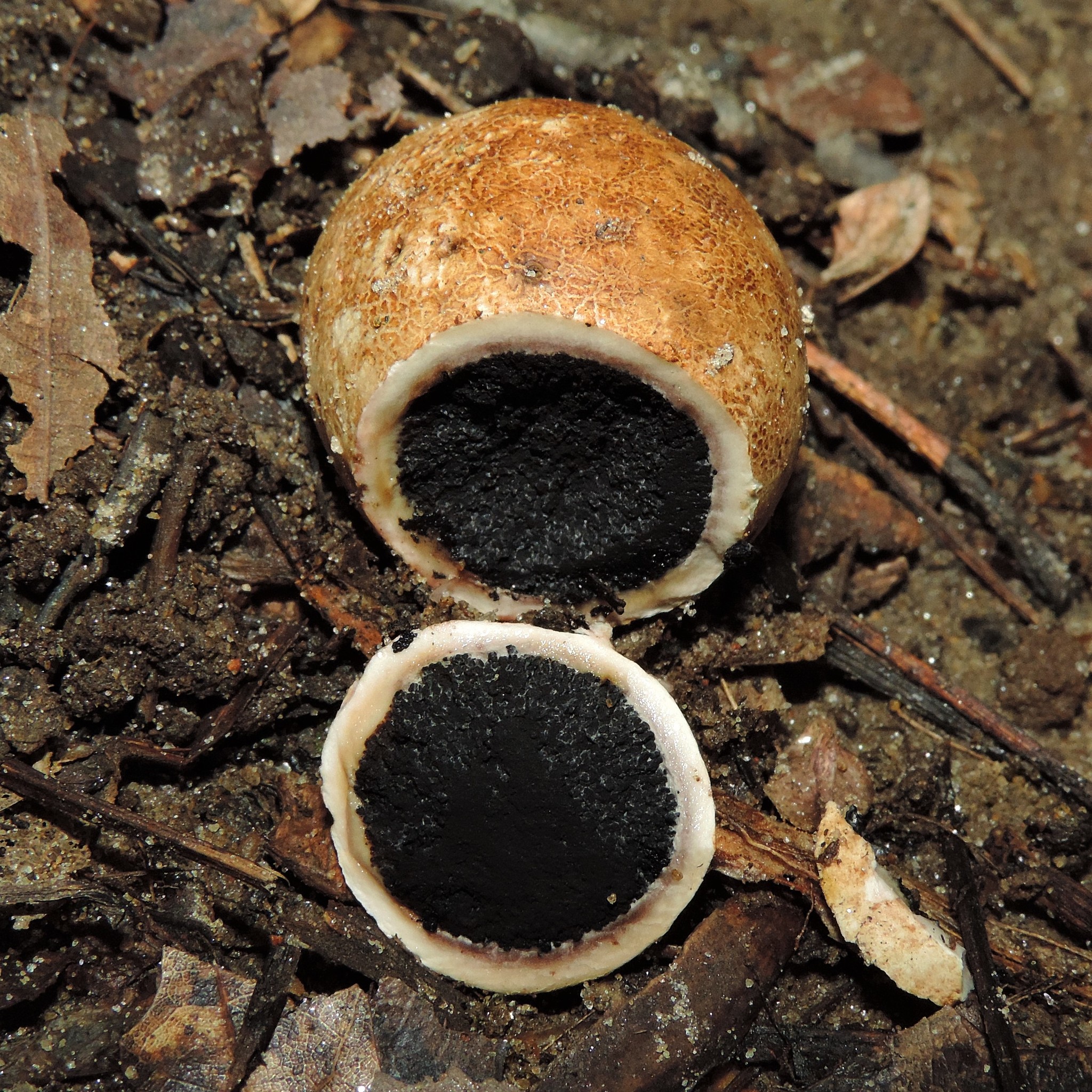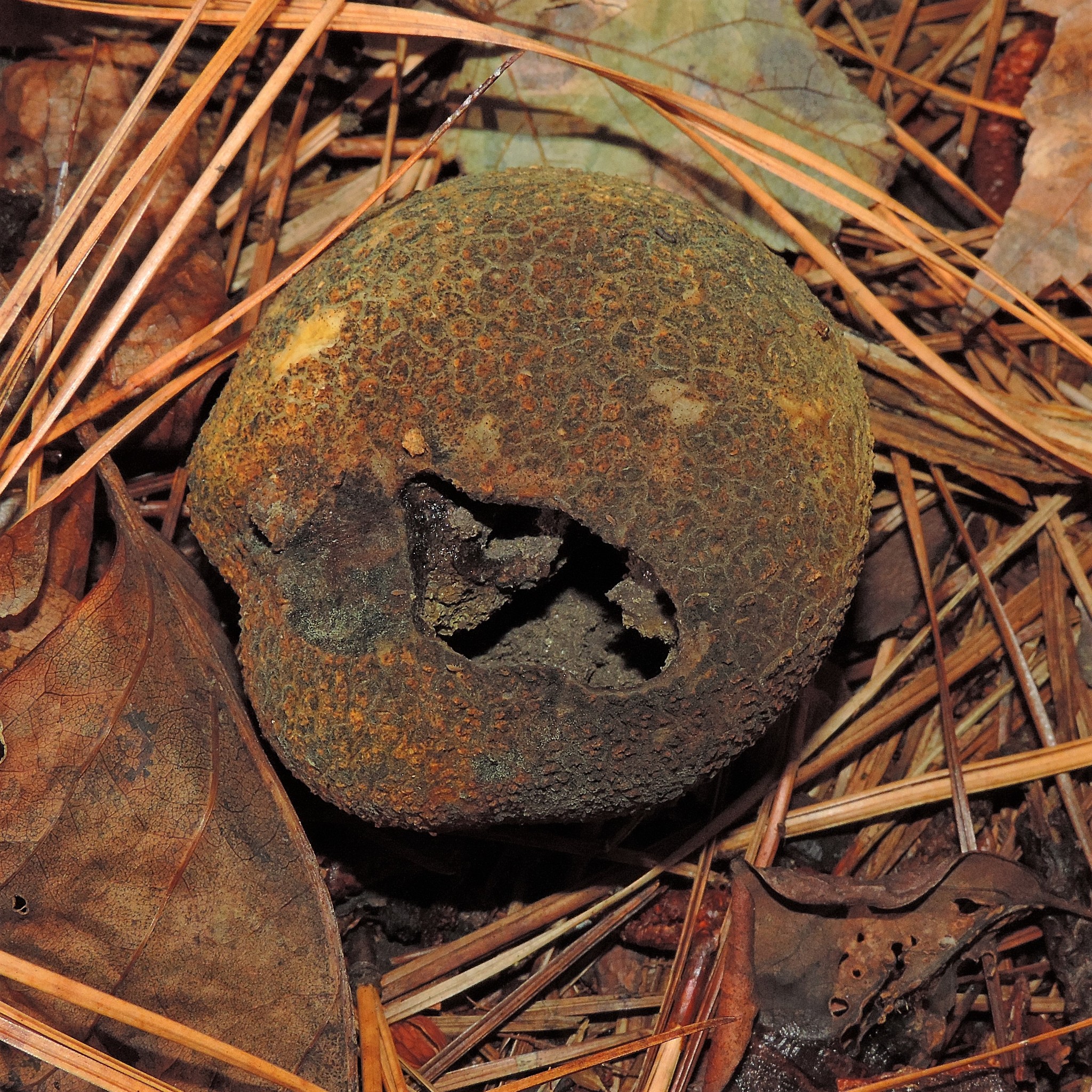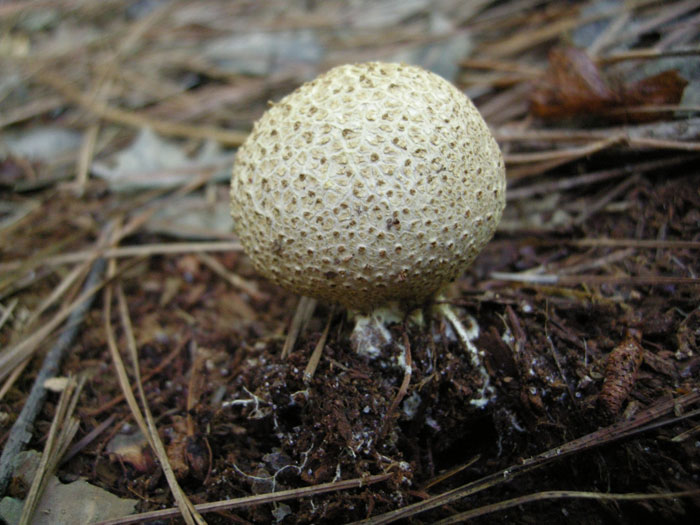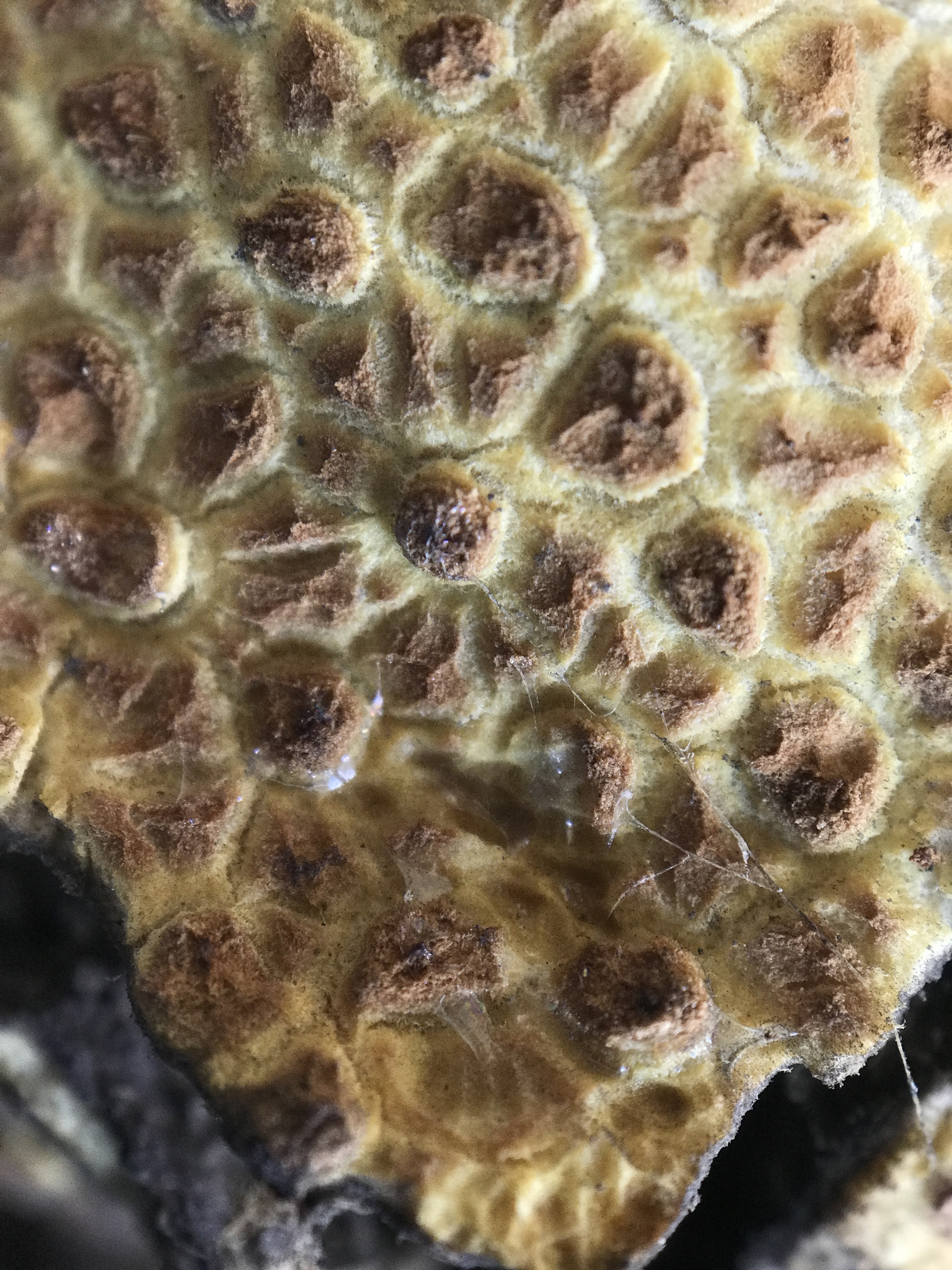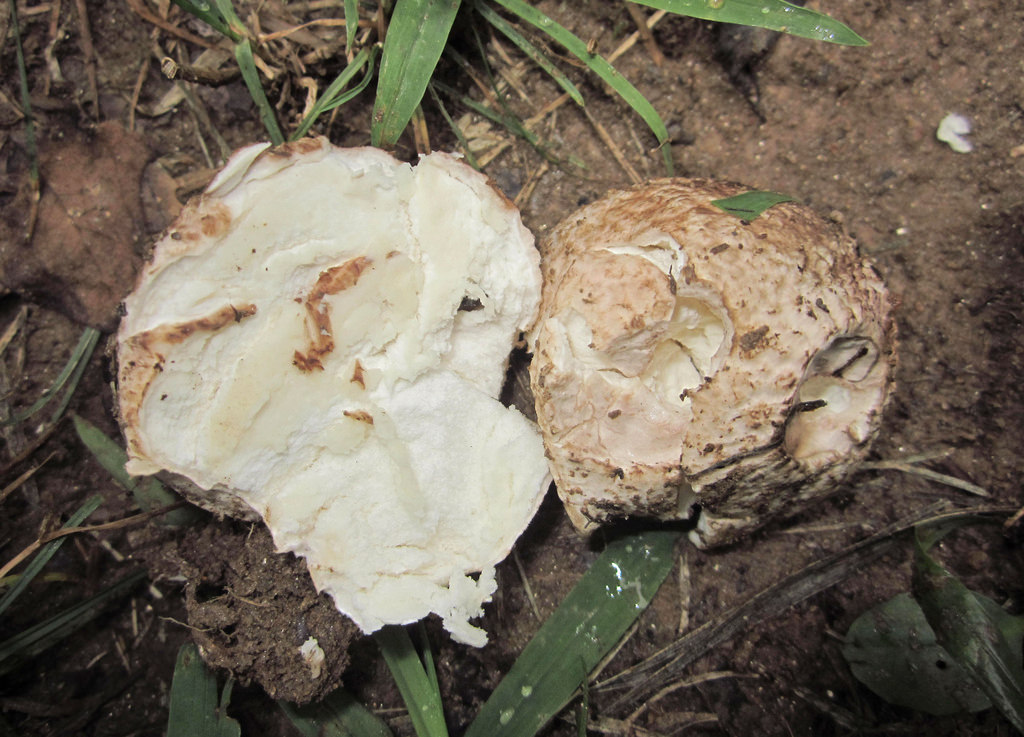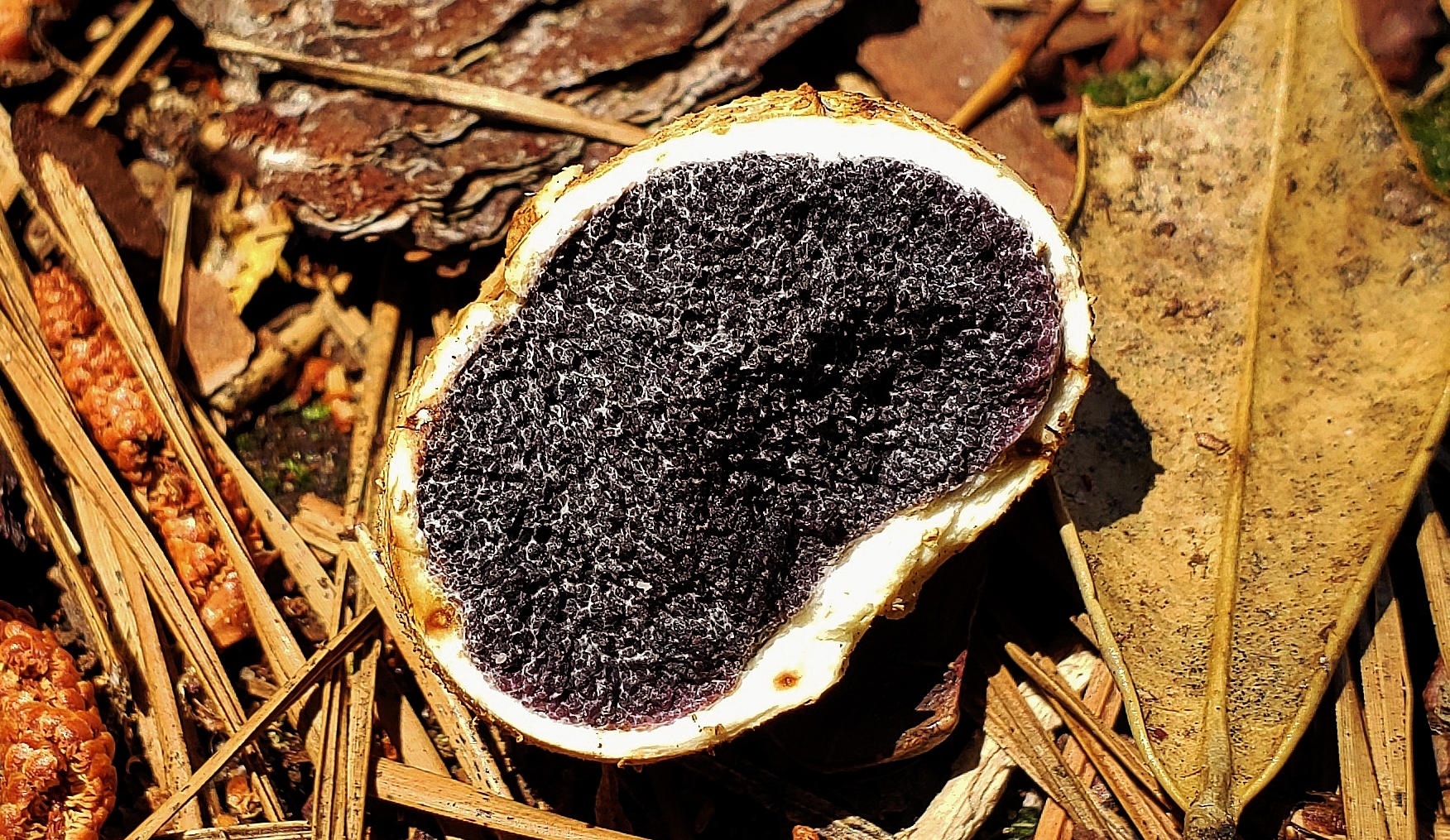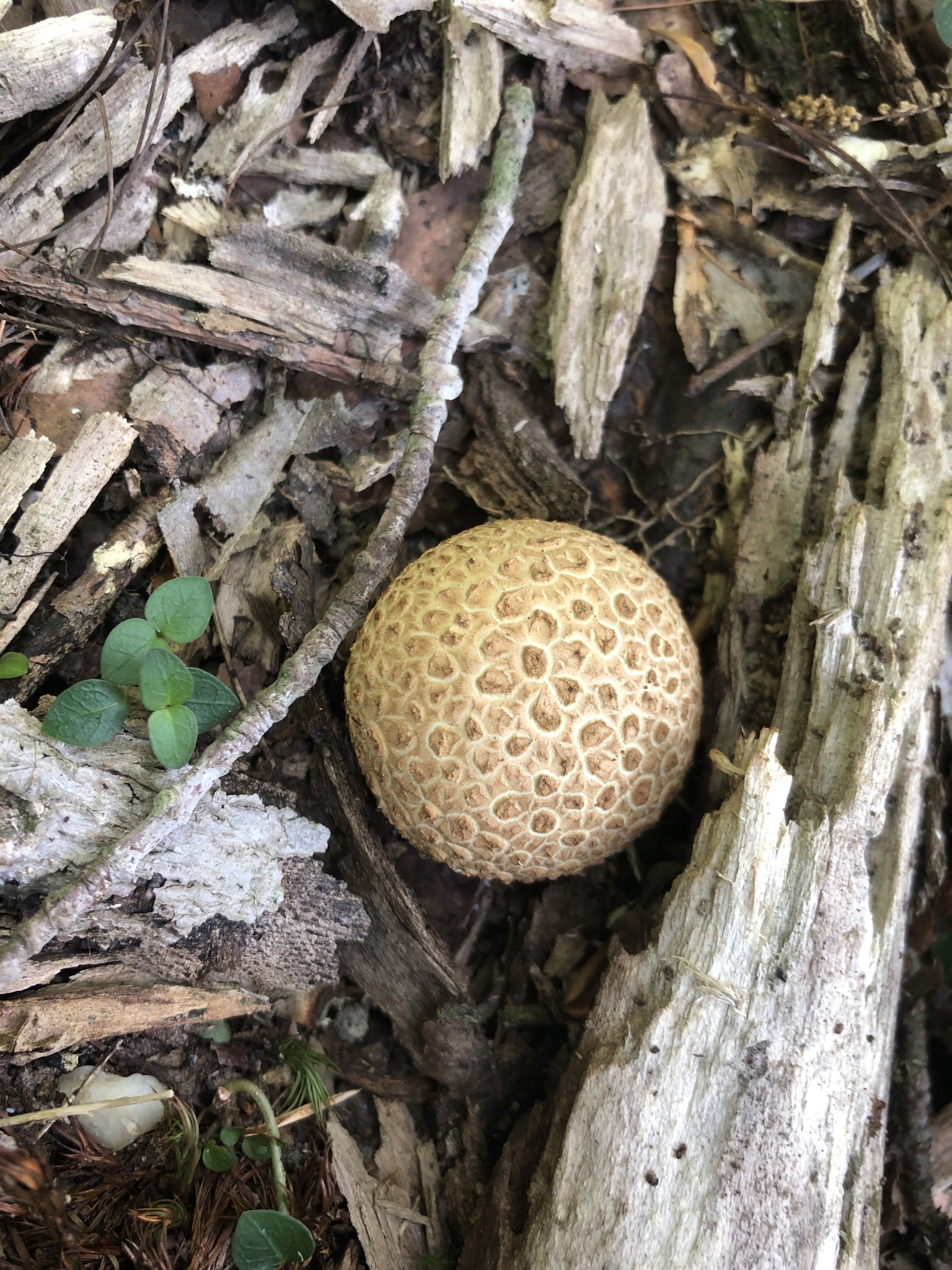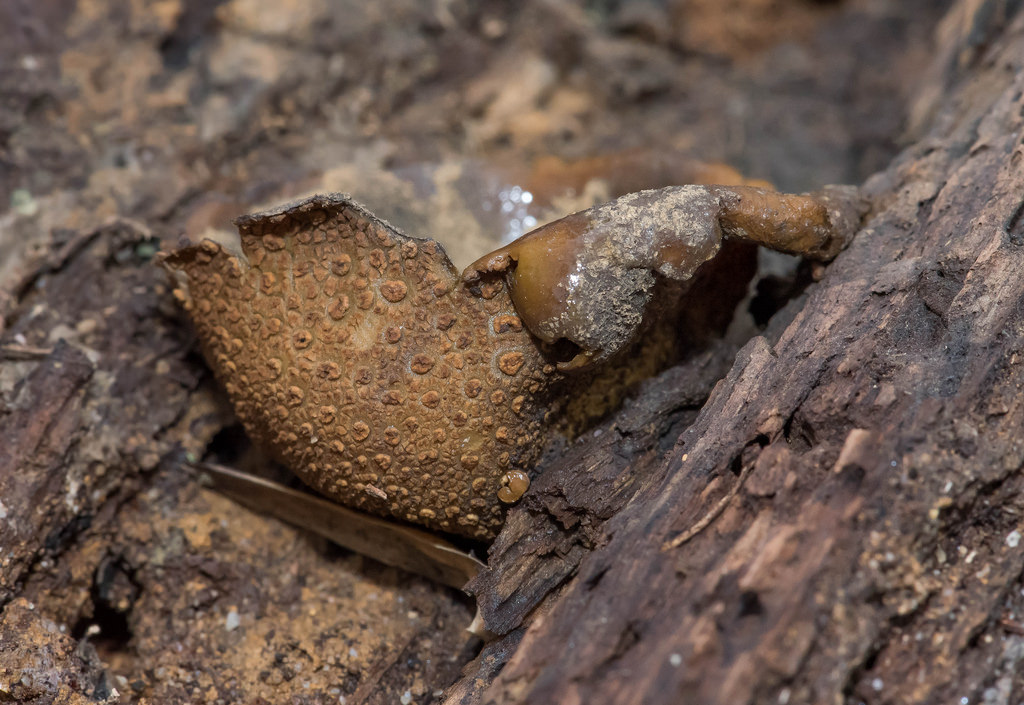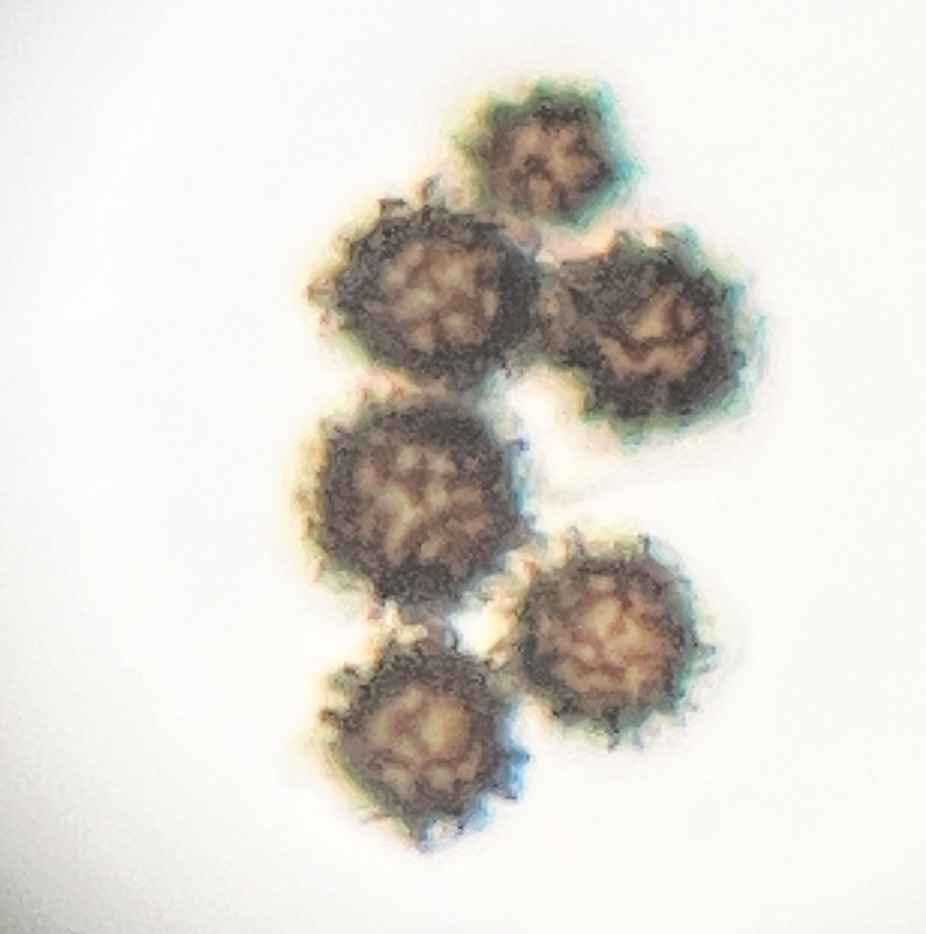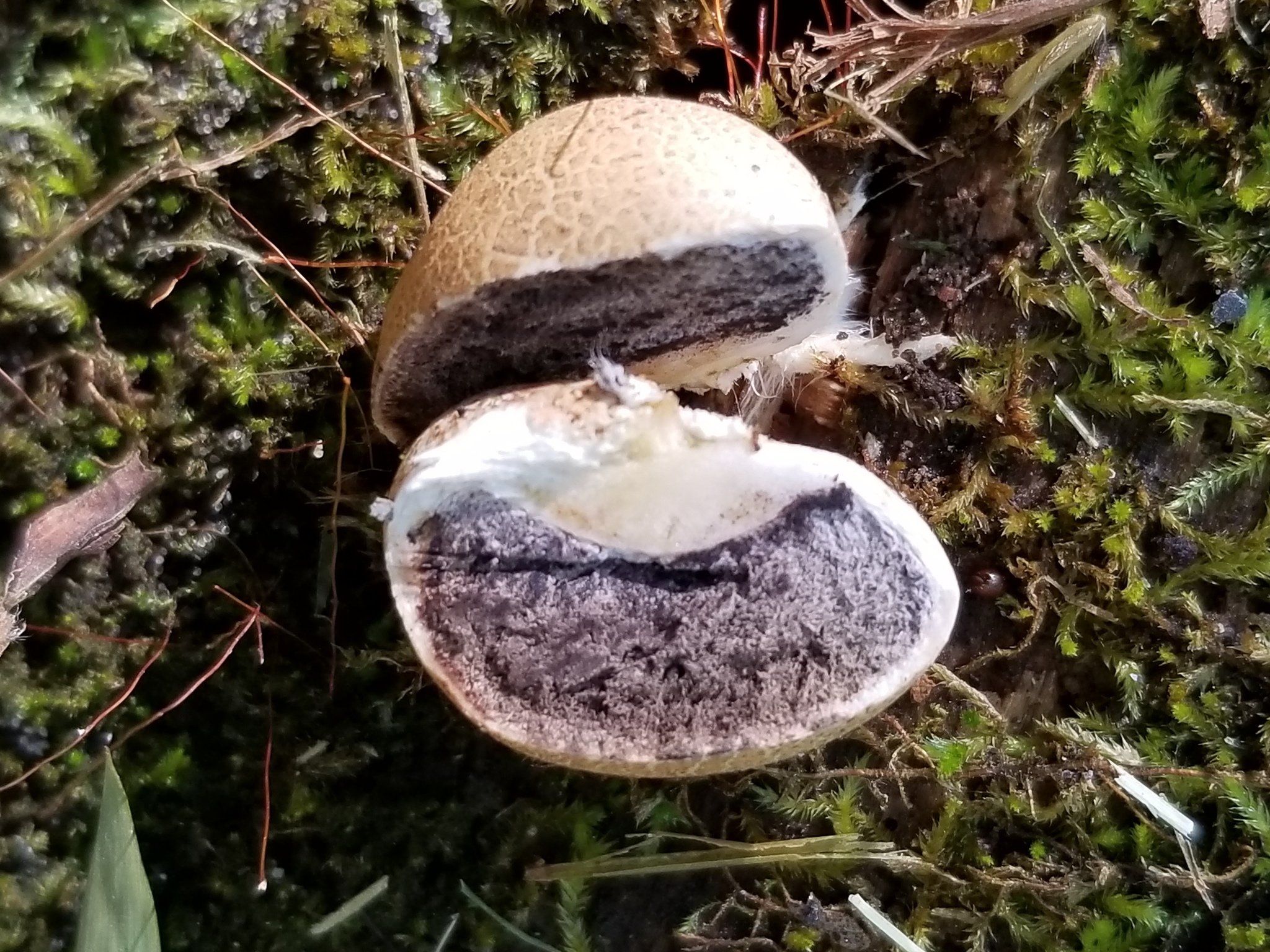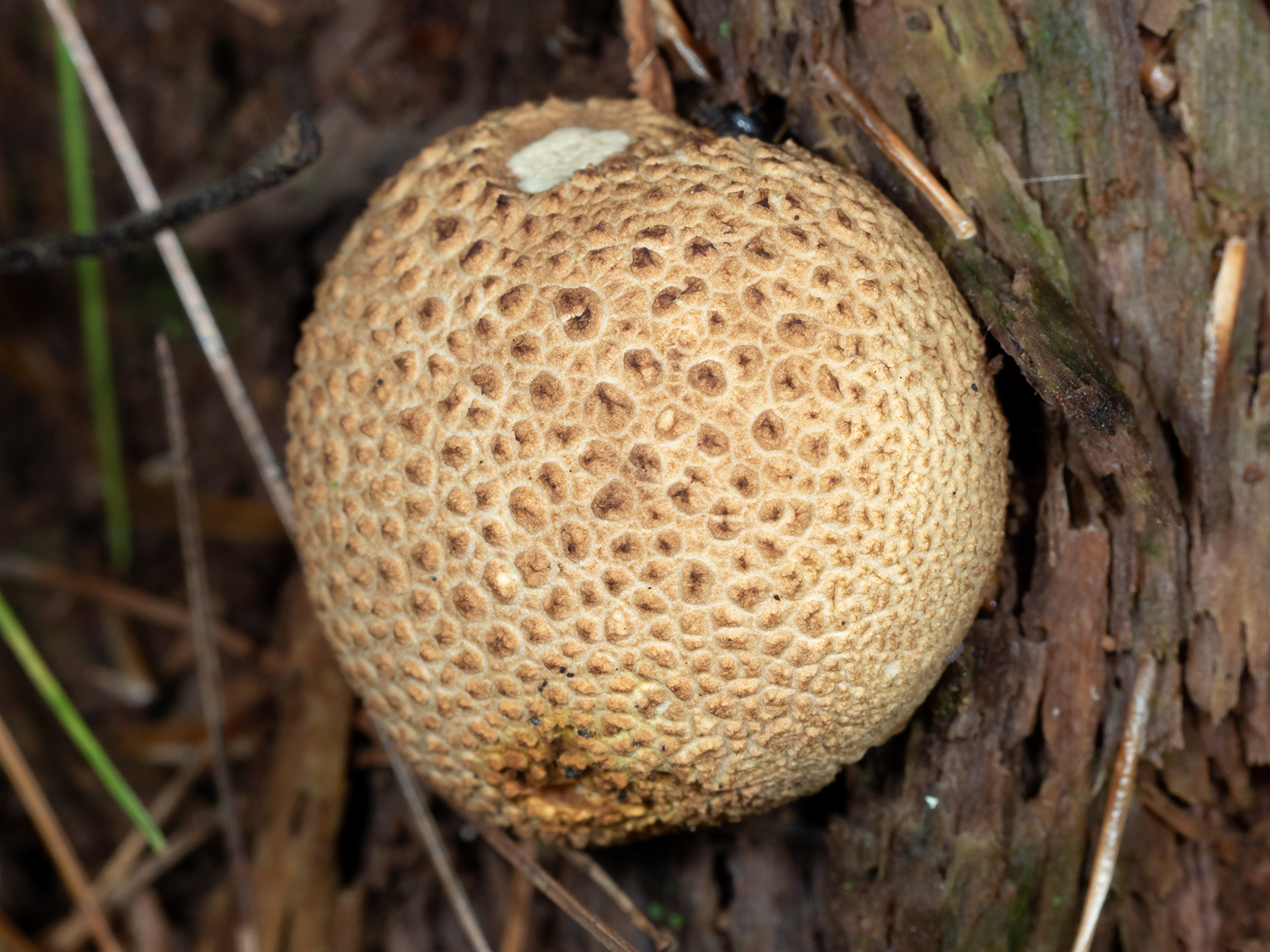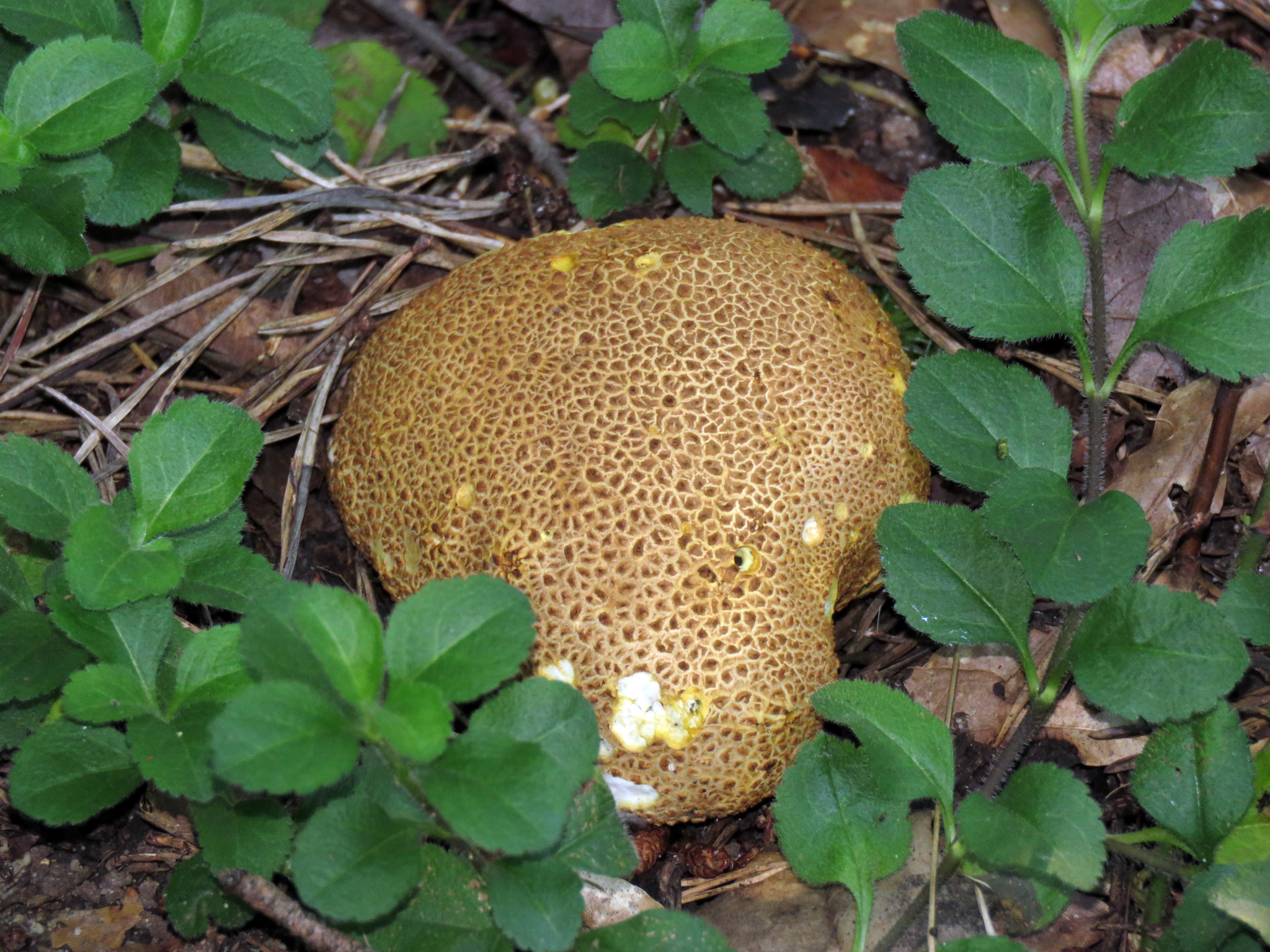Map Snapshot





















219 Records
Status
A very common earthball in Maryland. Common Earthball grows solitary or in groups on the ground or on decaying wood in forests.
Description
The fruiting body of Common Earthball is typically some shade of brown and covered in coarse, raised scales in an irregular polygonal pattern. The outer layer is thick and tough. The flesh starts off firm and white when young and matures to a purple or nearly black mass of spores. The upper surface breaks open to expose the spores but does not separate into lobes (like the Earthstar Puffball, Scleroderma polyrhizum).
Relationships
Sometimes attacked by Parasitic Bolete (Boletus parasiticus), a small bolete that may have several fruiting bodies attached to one puffball. The exact relationship between the two species is not fully understood. (L. Biechele, pers. comm.)
Seasonality Snapshot
Source: Wikipedia
This article needs additional citations for verification. (January 2024) |
| Scleroderma citrinum | |
|---|---|

| |
| Scientific classification | |
| Domain: | Eukaryota |
| Kingdom: | Fungi |
| Division: | Basidiomycota |
| Class: | Agaricomycetes |
| Order: | Boletales |
| Family: | Sclerodermataceae |
| Genus: | Scleroderma |
| Species: | S. citrinum
|
| Binomial name | |
| Scleroderma citrinum | |
| Scleroderma citrinum | |
|---|---|
| Glebal hymenium | |
| No distinct cap | |
| Hymenium attachment is not applicable | |
| Lacks a stipe | |
| Spore print is purple-black | |
| Ecology is mycorrhizal | |
| Edibility is poisonous | |

Scleroderma citrinum, commonly known as the common earthball,[1] pigskin poison puffball,[2] or common earth ball,[3] is a species of earthball fungus found in Europe and in North America. It is the most common species of earthball fungus in the UK and occurs widely in woods, heathland and in short grass from autumn to winter. Scleroderma citrinum has two synonyms, Scleroderma aurantium (Vaill.) and Scleroderma vulgare Horn.[4]
Earthballs are superficially similar to, and considered look-alikes of, the edible puffball (particularly Apioperdon pyriforme), but whereas the puffball has a single opening on top through which the spores are dispersed, the earthball just breaks up to release the spores. Moreover, Scleroderma citrinum has much firmer flesh and a dark gleba (interior) much earlier in development than puffballs. Scleroderma citrinum has no stem but is attached to the soil by mycelial cords. The peridium, or outer wall, is thick and firm, usually ochre yellow externally with irregular warts.
Scleroderma citrinum is an ectomycorrhizal fungus with a symbiotic relationship with some tree species, and can influence the diversity of soil bacterial communities under some tree species.[5]
The earthball may be parasitized by Pseudoboletus parasiticus.
Scleroderma citrinum can be mistaken with truffles by inexperienced mushroom hunters. Ingestion of Scleroderma citrinum can cause gastrointestinal distress in humans and animals. Some individuals may experience lacrimation, rhinitis and rhinorrhea, and conjunctivitis from exposure to its spores.[6][7]
Pigments found in the fruiting body of Scleroderma citrinum Pers. are sclerocitrin, norbadione A, xerocomic acid, and badione A.
Notes
[edit]- ^ "List of Recommended English Names For Fungi in the UK" (PDF). Fungi 4 Schools. British Mycological Society. Archived from the original (PDF) on 2011-07-16. Retrieved 2007-09-17.
- ^ "Oxbow National Wildlife Refuge: Final Comprehensive Conservation Plan, January 2005" (PDF). U.S. Fish and Wildlife Service. January 2005. p. 195. Retrieved 2007-09-17 – via library.fws.gov.
- ^ Falandysz J (March 2002). "Mercury in mushrooms and soil of the Tarnobrzeska Plain, south-eastern Poland". J Environ Sci Health a Tox Hazard Subst Environ Eng. 37 (3): 343–52. doi:10.1081/ese-120002833. PMID 11929073. S2CID 24124204.
- ^ Pekşen, Aysun and Gürsel Karaca (2003). "Macrofungi of Samsun Province" (PDF). Turkish Journal of Botany. 27: 173–184.
- ^ "Scleroderma citrinum - microbewiki". microbewiki.kenyon.edu. Retrieved 2024-09-02.
- ^ "Reflections on Mushroom Poisoning – Part III" (PDF). Fungifama: The Newsletter of the South Vancouver Island Mycological Society. October 2006. Retrieved 2007-09-17 – via svims.ca.
- ^ Hoffman, Ursula. "Poisonous Mushrooms in Northeastern North America". NorthEast Mycological Federation, Inc. Archived from the original on 2004-06-07. Retrieved 2007-09-17.
References
[edit]- Buckzacki, Stefan; John Wilkinson (1982). Mushrooms and Toadstools (Collins Gem Guide). Wm. Collins Sons & Co. Ltd. ISBN 0-00-458812-6.
- Wakefield, Elsie M. (1964). The Observer's Book of Common Fungi (Observer's Pocket Series No. 19) (3rd printing ed.). Frederic Warne & Co Ltd. OCLC 748994120.
External links
[edit]- Medicinal Mushrooms Description, bioactive compounds, medicinal properties
- Mushroom Expert Additional information
